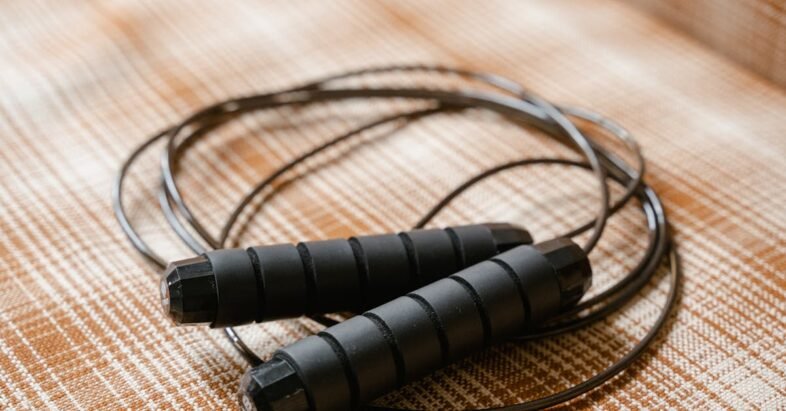Hydration and Its Role in Weight Loss
Staying well-hydrated is essential for overall health and plays a significant role in the weight loss process. Water not only helps maintain bodily functions but also supports metabolism and aids in digestion. Adequate hydration can help control hunger, reducing the likelihood of overeating or snacking between meals. When thirst is mistaken for hunger, individuals may consume extra calories unnecessarily.
In addition to regulating appetite, drinking water can enhance exercise performance. Well-hydrated muscles perform better and recover more quickly, allowing for more efficient workouts. This connection between hydration and physical activity emphasizes the need for careful attention to fluid intake during weight loss journeys. A consistent routine of drinking water throughout the day can lay the groundwork for a healthier lifestyle and effective weight management.
Hop over here to discover more.
Water Consumption Guidelines
Staying properly hydrated is crucial for overall health and can significantly influence weight loss efforts. The general recommendation is to consume at least eight 8-ounce glasses of water daily, often referred to as the “8×8” rule. This serves as a convenient guideline, but individual hydration needs may vary based on factors such as body weight, activity level, and climate. Some people may require more water if they engage in vigorous exercise or live in hotter environments.
Incorporating water into daily habits can enhance hydration. Carrying a reusable water bottle makes it easier to drink water consistently throughout the day. Infusing water with fruits, herbs, or vegetables can add flavor, making it more appealing. Tracking fluid intake using apps or journals may also help individuals ensure they meet their hydration goals. Adequate hydration can support various bodily functions, including digestion and metabolism, which are key components of effective weight management.
Meal Planning Strategies
Effective meal planning begins with understanding individual nutritional needs. This involves setting clear goals based on dietary preferences and lifestyle. Creating a variety of meals can help ensure a balanced intake of essential nutrients. Exploring new recipes and incorporating different food groups into daily menus can keep meals interesting and enjoyable.
Grocery shopping plays a crucial role in successful meal planning. Preparing a list before heading to the store can help in avoiding impulsive purchases and sticking to healthier options. Opting for whole foods, such as fruits, vegetables, lean proteins, and whole grains, contributes to better nutrition. Setting aside time each week to prep meals can further simplify the process, making it easier to remain on track with dietary goals.
Creating Balanced Menus
A well-structured menu is vital in maintaining a balanced diet. Incorporating a variety of foods helps ensure all essential nutrients are included. Focus on whole grains, lean proteins, healthy fats, and a wide range of colorful fruits and vegetables. This diversity not only enhances the nutritional value but also keeps meals interesting. Planning meals ahead of time can reduce the temptation to opt for less healthy options when hunger strikes.
When creating menus, portion control plays an important role. Understanding serving sizes helps in balancing calorie intake with nutritional needs. Consider using tools like measuring cups or food scales to accurately gauge portions. It can also be beneficial to prepare meals in advance, allowing for better control over ingredients and portion sizes during the week. This practice encourages healthier eating habits and aids in sticking to weight loss goals.
Exercise and the 30 30 30 Rule
The 30 30 30 rule encourages a balanced approach to physical activity by emphasizing a combination of cardiovascular exercise, strength training, and flexibility work. Spending approximately 30 minutes on each of these components can enhance overall fitness and support weight loss goals. Cardiovascular exercises, such as running or cycling, elevate heart rate and burn calories effectively. Follow this with 30 minutes of strength training to build muscle mass, which in turn increases metabolic rate.
Incorporating flexibility exercises like yoga or stretching for 30 minutes ensures the body remains agile and can help in recovery. This well-rounded exercise routine not only targets various aspects of fitness but also helps prevent injuries. With a consistent application of the 30 30 30 methodology, individuals can create a sustainable and enjoyable workout regimen that fosters both physical and mental well-being.
Incorporating Physical Activity
Physical activity plays a vital role in the 30 30 30 rule for weight loss. Dedicating time to various forms of exercise not only boosts metabolism but also ensures a calorie deficit, a crucial component of successful weight loss. This approach encourages individuals to engage in both cardio and strength training, which promotes muscle growth and fat loss. Finding activities that one enjoys can enhance motivation and adherence to a regular fitness routine, making it easier to maintain consistency over time.
Incorporating physical activity doesn’t have to be a rigid regimen. Starting with small, manageable steps can create a sustainable habit. Walking during lunch breaks or taking the stairs instead of the elevator can introduce movement throughout the day. As fitness levels improve, increasing the intensity of workouts or exploring new types of exercise can keep the routine fresh and exciting. This adaptability ensures that physical activity becomes a natural and enjoyable part of daily life.
FAQS
What is the 30 30 30 rule for weight loss?
The 30 30 30 rule for weight loss suggests that individuals should aim to spend 30 minutes on cardiovascular exercise, 30 minutes on strength training, and 30 minutes on flexibility or stretching exercises each week to promote effective weight management.
How does hydration play a role in the 30 30 30 rule?
Hydration is crucial for overall health and can enhance workout performance. Drinking enough water supports metabolism, aids digestion, and can help control hunger, making it an important aspect of the 30 30 30 rule.
Can I modify the 30 30 30 rule to fit my schedule?
Yes, the 30 30 30 rule can be adjusted to fit your personal schedule. You can break down the exercise sessions into shorter increments throughout the day as long as the total time spent on each component remains consistent.
Is the 30 30 30 rule suitable for everyone?
While the 30 30 30 rule can be beneficial for many, it may not be suitable for everyone, particularly those with specific health conditions or fitness levels. It’s advisable to consult with a healthcare provider or fitness professional before starting any new exercise regimen.
What types of exercises can I include in the 30 minutes of strength training?
For the strength training portion, you can include exercises like weight lifting, bodyweight exercises (such as push-ups and squats), resistance band workouts, or any activities that build muscle strength.
Related Links
quick weight loss tips for wedding
How can I slim down 2 weeks before my wedding?
How to lose weight fast for your wedding?


